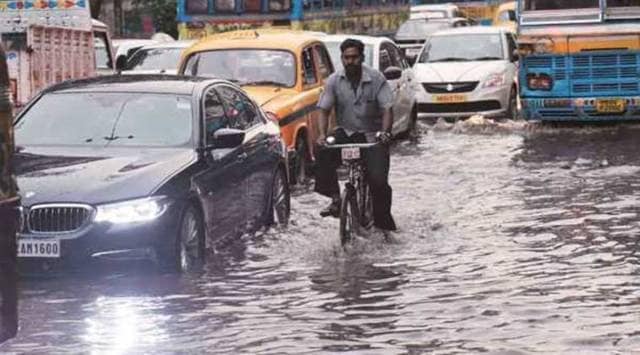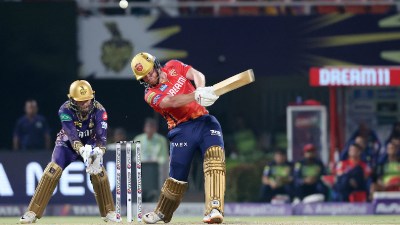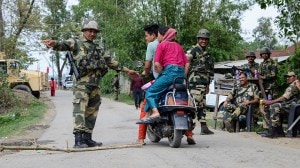- India
- International
IMD eyes flood warning system for Kolkata, improved computational capacities in 2021
"The flood warning system for Kolkata will be ready by monsoon 2021 and basic works required for the same have been completed," he said.
 The IMD collaborates with local municipal corporations and the district administration in gathering information about water bodies, drainage networks and topography. [Express file photo]
The IMD collaborates with local municipal corporations and the district administration in gathering information about water bodies, drainage networks and topography. [Express file photo]While the Covid-19 pandemic may have delayed some of its projects this year, the India Meteorological Department (IMD) has ambitious plans for 2021, including better computational capacities, flood warning system for metros and health forecasts for vector-borne diseases.
After Chennai and Mumbai, Kolkata will become the third Indian city to get its own flood warning system, M Rajeevan, secretary, Ministry of Earth Sciences (MoES) said recently.
While the service in Mumbai was rolled out in June this year, preliminary works are underway in many cities, Rajeevan said during an online address, ‘Recent advancements in weather and climate predictions in India’ organised by Indian Academy of Sciences’.
“The flood warning system for Kolkata will be ready by monsoon 2021 and basic works required for the same have been completed,” he said.
The IMD collaborates with local municipal corporations and the district administration in gathering information about water bodies, drainage networks and topography. Based on real-time rainfall recorded at a location, the flood warning system generates warnings — with area-specific likely height of flooding, which is then shared with the local administration for evacuation measures.

Rajeevan also said the ministry will scale-up its supercomputing capacity from 10 Petaflop to 40 Petaflop by 2021.
While the ministry has been developing tailor-made weather products for sectors like agriculture, aviation, tourism, energy and health, it will introduce forecasts that could warn against malaria outbreaks.
A few months ago, meteorologists at Pune-based Indian Institute of Tropical Meteorology had collaborated with officials from the Maharashtra health department to study the role of rainfall and temperature in malaria caseload in Pune, Mumbai and Nagpur. Taking the study to the field, the IMD has been entrusted to issue forecasts for this vector-borne disease starting next monsoon season.
“Malaria cases reported from Nagpur were studied. Next year onwards, IMD will issue forecasts ahead of a possible malaria outbreak. The same can be done in multiple cities,” he said.
In the field of climate science, India is working closely with the World Meteorological Organisation (WMO) in developing Integrated Earth Observing System, Rajeevan said. Besides, there are also talks on launching CubeSats, which are small satellites weighing not more than 3 or 4 grams which will be used for atmospheric data gathering.
‘Nowcast in South Asia needs to be augmented’
Last month, the IMD took the lead in establishing South Asia Flash Flood Guidance Service for Afghanistan, Bangladesh, Bhutan, India, Maldives, Myanmar, Nepal, Pakistan and Sri Lanka. New Delhi and Islamabad will be the two locations where flash flood guidance centres will be located, of which the Indian office has started operations. In an online meeting of South Asian Meteorologists Association held recently, Mrutyunjay Mohapatra, director general of IMD, urged member nations to augment their nowcast services. Nowcast are forecasts which warn of extreme weather events expected to occur within the next three to six hours over a localised region. “As economies of South Asian countries are agriculture-dependent, they rely heavily on weather information. More radars need to be installed that will cover the South Asian region and help track severe weather events affecting the region,” said Mohapatra.
Apr 27: Latest News
- 01
- 02
- 03
- 04
- 05































